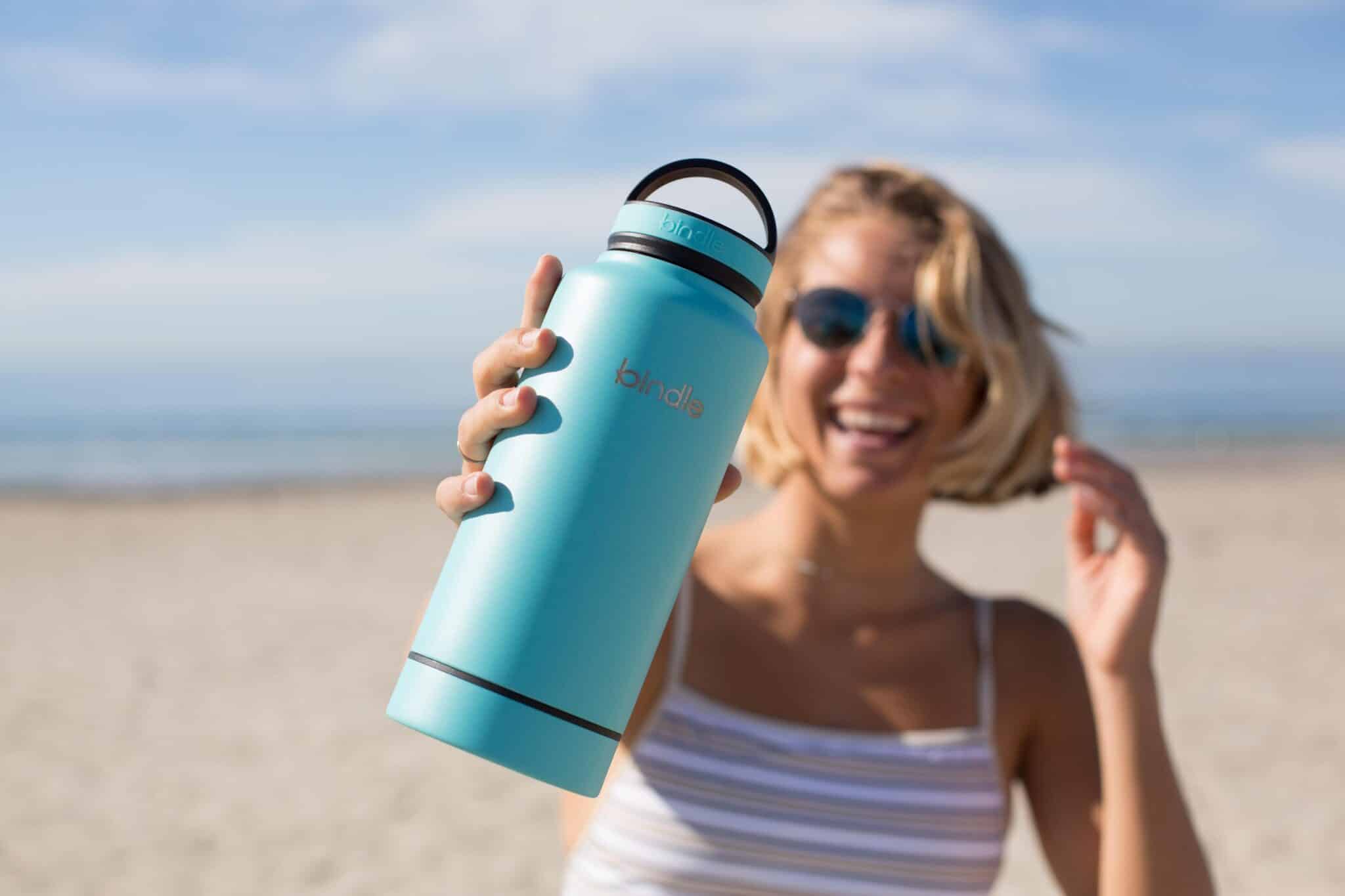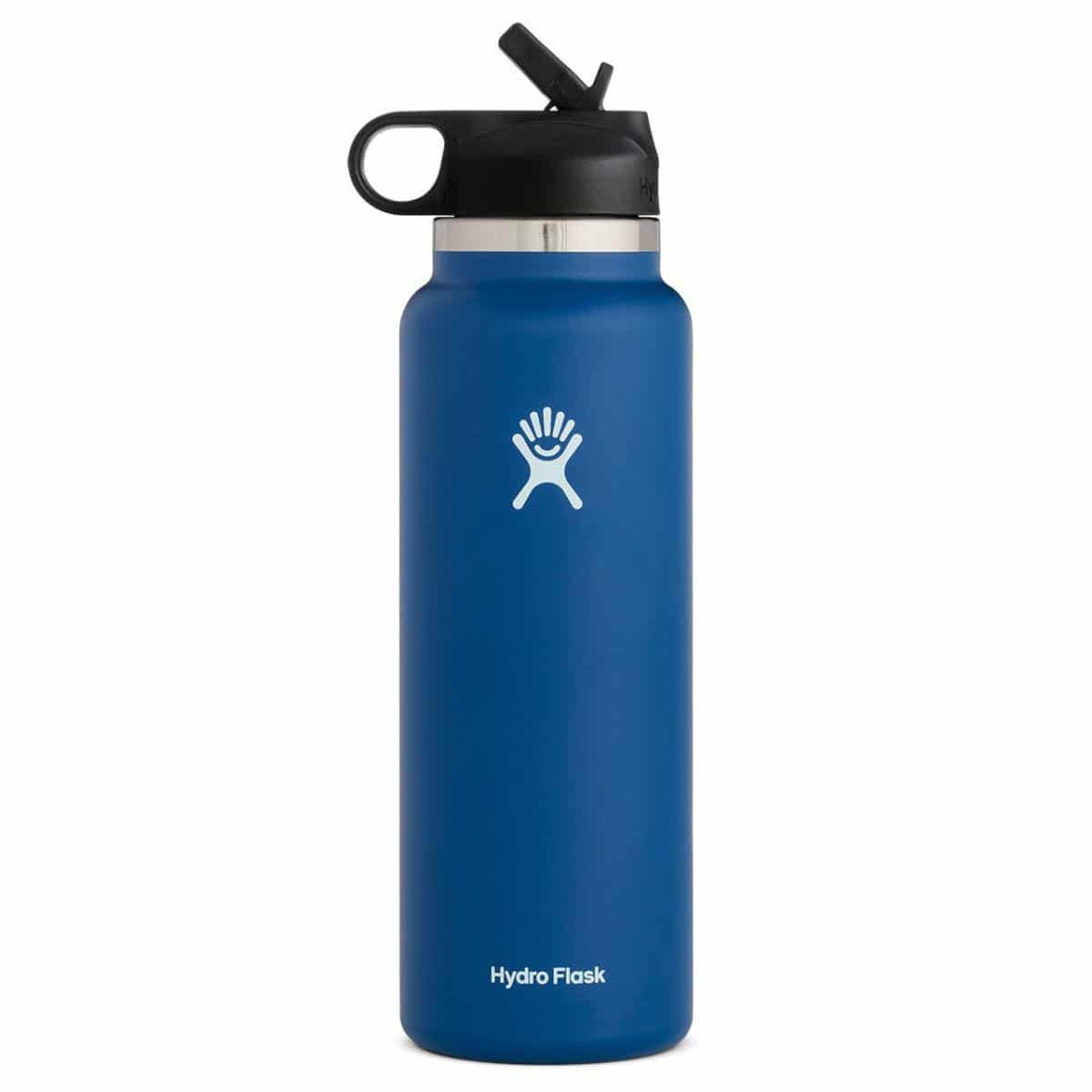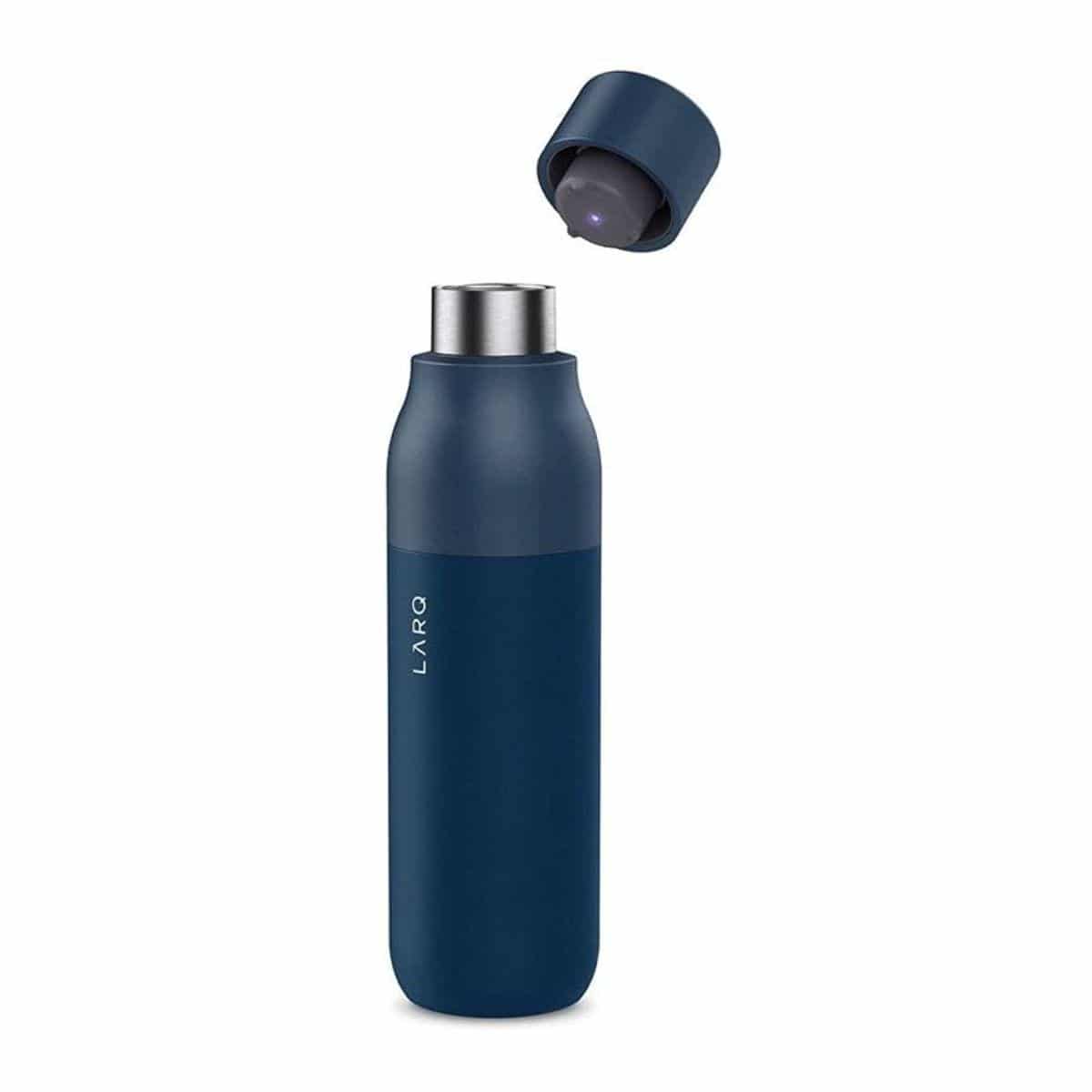

Hydration is key to a healthy lifestyle, but at the rate plastic bottles are being dumped into landfills, how you hydrate might be even more important. Reusable water bottles prevent the need for single-use plastics, but which are the best eco-friendly water bottles available?
According to the Container Recycling Institute, a nonprofit organization with the goal of ending plastic pollution and promoting recycling, in 2018, Americans bought more than 70 billion plastic water bottles that were one gallon or less (in other words, single-use).
Of those, three out of four—or 52.5 billion bottles—ended up in a landfill or incinerator. And that’s not even taking into account the many, many single-use plastic bottles that end up littering our parks, roads, and oceans.
Here’s why it matters. According to the Recycling Coalition of Utah, it takes up to 1,000 years for plastic to degrade in a landfill. Additionally, the CRI says the production of plastic bottles themselves takes more water than the bottles actually contain, and the process requires more than 15 million barrels of oil. For reference, that’s enough oil to fuel 100,000 cars for an entire year.
All this is to say, it’s time we do our part to lower our plastic consumption and, as a result, our individual carbon footprints.
Fortunately, doing so is easier than ever before. That’s because, with eco-conscious wellness on the rise, companies all over the world are launching eco-friendly water bottles that can be used over and over again.
Since there are so many reusable water bottles on the market, we’ve narrowed down five high-quality options for your consumption consideration. Ahead, you’ll discover a handful of bottles that are all worthy of making room for in your kitchen and routine.
Each product featured here has been independently selected by the writer. If you make a purchase using the links included, we may earn commission.
Klean Kanteen Reusable Water Bottle

Klean Kanteen insulated bottles are some of the most eco-friendly water bottles on the market. The company is a certified B Corp, it supports 1% for the Planet by giving back a portion of its profits, and all products are Climate Neutral Certified.
If you’re not worried about keeping your water cold, the company has a basic model that’s uninsulated as well. It also sells items like tumblers with straw lids, basic stainless-steel cups, and 12-ounce reusable water bottles made just for kids.
Bottle sizes range from 16 to 64 ounces and come in a rainbow of colors.
Additionally, there are a number of cap options that fit each bottle, so whether you want to sip, chug, or drink your water through a straw, Klean Kanteen has you covered — it even sells spill-proof kids sippy-cup-style lids.
Why Buy: Certified B Corp; Supports 1% for the Planet; Climate Neutral Certified; BPA-free; Lightweight model available; Dishwasher-safe
Soma Reusable Water Bottle

If stainless-steel insulation isn’t your thing, try a Soma bottle. These bottles are made of glass and come with a silicone sleeve to absorb impact when dropped. Plus, Soma bottles come with a lifetime warranty against breakage, so if your bottle does happen to shatter, the company will replace it at no charge.
Soma’s product line includes not only standard glass bottles, but also a Sports Bottle with an activity-friendly cap, an insulated Brew Bottle for hot beverages and water infusion, ceramic mugs, glass straws, pitchers, carafes, and more. Each comes in a variety of colors, so you’re sure to find one to suit your mood.
One of our favorite things about Soma is that it partners with nonprofit organizations like Parley and Lonely Whale, and a percentage of proceeds from every purchase goes to Charity: Water, a nonprofit that brings clean, safe drinking water to people in developing countries.
Why Buy: B Corp; Each purchase supports Charity: Water; Company offsets emissions with conservation-based forestry; Packaged with post-consumer waste and recyclable materials; Dishwasher safe; BPA-free
Hydro Flask Reusable Water Bottle

Hydro Flask is quite possibly the most popular eco-friendly water bottle among Gen Zers. The trendy reusable is renowned for its bold colors and simple design. With bottle options ranging from 12 to 64 ounces, there’s a perfect pick for everyone in the family.
Hydro Flask lets shoppers choose from multiple lids, including standard, wide, and straw options. Each bottle is made with stainless steel accompanied by TempShield technology, which keeps cold beverages cold and hot beverages hot.
Beyond the bottle, Hydro Flask created a charitable program, Parks For All, that benefits public green spaces and promotes outdoor adventure among its shoppers. For every purchase made, a portion is dedicated to the program. As a result, Hydro Flask has donated more than .5 million to over 92 eco-friendly non-profits.
Why Buy: Supports Parks For All; BPA-free; Dishwasher-safe
LARQ Reusable Water Bottle

LARQ
If high-tech gadgets are your thing, you’ll fall head over heels for this best-selling reusable water bottle. The LARQ’s minimalist design is accompanied by UV-C LED technology that automatically activates every two hours to fully filter your water.
As such, the innovative design is able to eliminate harmful bacteria and viruses from your beverage so that you don’t accidentally give yourself something if you’re one to use your bottle for a few days straight or if you’re drinking unfiltered water while hiking. That also means it won’t get funky between washes.
In addition to its sanitizing capabilities, LARQ double-walled bottles offer insulation of cold beverages up to 24 hours and hot beverages up to 12. There is also a LARK Movement model, which is single-walled (uninsulated) but lighter to take on your adventures The original bottle is available in 17- and 25-ounce options, as well as five colors, while the Movement bottle is sold in 24- and 32-ounce options and eight colorways.
Why Buy: Supports 1% for the Planet; Removes 99.9% of germs, bacteria, and viruses; Lightweight model available; BPA-free
S'well Reusable Water Bottle

Since the debut of its very first water bottle—the beloved 17-ouncer—S’well has been a household name among eco-conscious consumers. The eco-friendly bottles—which are now available in 9-, 17-, and 20-ounce options—are made with a triple-insulated silhouette that keeps cold beverages cold for up to 36 hours and hot beverages hot for up to 18.
Once S’well realized the demand for such an item, the company delved into food containers and barware as well in an effort to offer consumers yet another way to cut back on their single-use plastic consumption. Now, S’well shoppers can choose from a variety of designs, from tumblers to kid-friendly bottles to reusable cutlery, as well as a wide array of colors and prints that are sure to turn heads.
Why Buy: Certified B Corp; BPA-free; Triple-insulated; Supports UNICEF clean water initiatives and Lonely Whale
Rebecca R. Norris is a full-time freelance writer living in the DC metro area. She writes for a variety of publications, covering everything from beauty and wellness to style and news. She is a graduate of George Mason University. There, she earned her B.A. in Media: Production, Consumption, and Critique, along with a minor in Electronic Journalism. The Virginia native is a lover of lists, Stevie Nicks, dark chocolate Sprinkles cupcakes, and the Oxford comma.

 233k
233k  41k
41k  Subscribe
Subscribe 